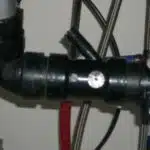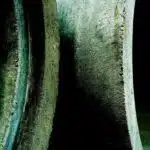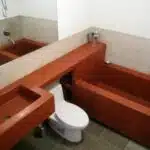The kitchen sink is one of the most frequently used appliances in any home. It serves as a hub for cooking, cleaning, and washing dishes. However, when the sink becomes clogged with standing water, it can cause frustration and inconvenience for homeowners. If left untreated, a clogged kitchen sink can lead to a potential backup of dirty water and unpleasant odors.
As a plumbing expert, I understand the importance of addressing clogged kitchen sinks promptly and efficiently. In this article, I will provide tips on how to unclog a kitchen sink with standing water using common household items and basic plumbing techniques. By following these steps, homeowners can avoid costly repairs and maintain the functionality of their kitchen sink. It is my hope that this guide will serve as a valuable resource for those who are looking to tackle this common household problem.
Identifying The Cause Of The Clog
According to recent studies, clogged kitchen sinks account for nearly 80% of plumbing issues in households. It’s no wonder why homeowners and landlords alike are constantly looking for ways to prevent and solve this pesky problem. Common signs of a clogged kitchen sink include slow draining water, foul odors emanating from the drain, and gurgling sounds coming from the pipes.
There are different types of kitchen sink clogs that can occur, each with their own unique set of characteristics. The most common type of clog is caused by food particles and grease buildup in the pipes. This type of clog can be identified by a slow draining sink or water backing up into the sink after running the dishwasher. Another type of clog is caused by foreign objects getting stuck in the drain such as utensils or small toys. This type of clog can be identified by a completely blocked sink with standing water.
Determining the cause of your clogged kitchen sink is crucial in finding an effective solution. Before attempting any DIY solutions, it’s important to identify what type of clog you have and how severe it is. In the next section, we will discuss how to remove standing water from your sink before proceeding with further unclogging methods.
Removing Standing Water
Now that we have identified the cause of the kitchen sink clog, it’s time to focus on removing the standing water. Standing water can be a breeding ground for bacteria and mold, which is why it’s important to address this issue quickly. Not only does removing standing water prevent water damage in your home, but it also helps to avoid harsh chemicals that can harm your plumbing system.
Using a bucket is an effective method for removing standing water in your kitchen sink. Simply place the bucket underneath the sink and open the pipes to drain the water into the bucket. This not only removes excess water, but it also makes it easier to access and remove any debris that may be causing the clog.
Natural methods for removing standing water are also available. Baking soda and vinegar can be used as a gentle way to break up clogs without using harsh chemicals. Pour 1/2 cup of baking soda down the drain followed by 1/2 cup of vinegar. Cover the drain with a cloth or plug and wait 5-10 minutes before flushing with hot water.
Preventing further damage to your plumbing system should always be a top priority when dealing with a kitchen sink clog. Avoiding harsh chemicals can help protect your pipes from corrosion and maintain their longevity. Now that we have removed the standing water, let’s move onto clearing debris from the drain stopper in order to fully clear any blockages in our kitchen sink.
Clearing Debris From The Drain Stopper
After attempting to unclog a kitchen sink with standing water, it is important to take preventative measures to avoid future blockages. One common cause of clogs in kitchen sinks is debris that accumulates around the drain stopper. This debris can be made up of food particles, grease, and soap scum.
Cleaning methods for removing this debris include using a toothbrush or small brush to scrub around the stopper and down into the drain. Another option is to use a wire hanger to fish out any visible debris. It is important to wear gloves during this process as it can be unsanitary and potentially harmful if any sharp objects are encountered.
Preventative measures for avoiding further buildup of debris around the drain stopper include installing a mesh screen over the drain opening, avoiding pouring grease down the drain, and running hot water down the sink after each use. By taking these steps, homeowners can avoid future clogs and keep their kitchen sinks functioning properly.
Transition: Now that you have cleared any visible debris from your kitchen sink’s drain stopper, let’s move on to using a plunger for more stubborn clogs.
Using A Plunger
When it comes to unclogging a kitchen sink with standing water, using a plunger can be an effective solution. A plunger creates a vacuum seal around the drain, allowing you to apply pressure that dislodges the clog. To use a plunger, fill the sink with enough water to cover the rubber part of the plunger. Then, place the plunger over the drain and push down firmly and quickly. Repeat this motion several times until the clog is cleared.
However, if using a plunger does not work or if you do not have one available, there are alternative methods to try. One option is to use a plumbing snake or auger, which can be inserted into the drain to break up and remove any blockages. Another alternative is pouring boiling water down the drain to dissolve any grease or organic material that may be causing the clog. It is important to note that chemical drain cleaners should be avoided as they can cause damage to your pipes and harm the environment.
In order to avoid causing damage when attempting to unclog your kitchen sink, it is important to take precautions such as wearing gloves and protective eyewear when handling chemicals or using tools like snakes or augers. Additionally, refrain from using excessive force when trying to clear a stubborn clog as this may result in further damage. If all else fails, it may be necessary to call in a professional plumber for assistance.
To create a natural drain cleaner with baking soda and vinegar, there are simple steps you can follow at home.
Creating A Natural Drain Cleaner With Baking Soda And Vinegar
- To create a natural drain cleaner using baking soda and vinegar, one should first gather the necessary materials, such as baking soda, white vinegar, rubber gloves, and a small bucket.
- Next, the baking soda and vinegar should be combined in equal parts in the bucket, creating a solution.
- It is recommended to wear rubber gloves while preparing and using the solution, as the vinegar’s acidity can cause skin irritation.
- Once the solution is prepared, it should be poured slowly down the sink drain and left to sit for approximately 10 minutes.
Gathering Materials
It’s a common mistake to attempt to unclog a kitchen sink without having the proper tools and materials on hand. When attempting to create a natural drain cleaner with baking soda and vinegar, it’s crucial to gather all necessary materials before beginning the process. This will save you time and effort in the long run.
Recommended tools for creating a natural drain cleaner include gloves, safety goggles, a plunger, a bucket, baking soda, distilled white vinegar, and hot water. Gloves and safety goggles will protect your skin and eyes from any potential reactions caused by the chemicals in the cleaner. A plunger is essential for removing any loose debris from the drain before using the cleaner. A bucket can be used to collect any excess water that may overflow during the process.
When gathering materials for creating a natural drain cleaner with baking soda and vinegar, it’s important to follow recommended tools and avoid common mistakes. By having all necessary tools on hand and taking precautions such as wearing gloves and safety goggles, you can ensure that the process goes smoothly without any accidents or setbacks. With these materials in hand, you’ll be well-equipped to tackle even the toughest clogged kitchen sinks with standing water.
Preparing The Solution
When it comes to unclogging a kitchen sink, using a natural drain cleaner with baking soda and vinegar can be an effective solution. However, preparing the solution requires attention to safety measures to avoid any potential hazards. Mixing vinegar and baking soda can cause an immediate reaction that produces foam and heat, so it’s important to take precautions when handling these ingredients.
To prepare the solution, start by removing any visible debris from the sink with a plunger or by hand. Next, pour half a cup of baking soda down the drain followed by one cup of hot distilled white vinegar. Cover the drain with a plug or towel to prevent any foam from escaping. Let the solution sit for at least 15 minutes before flushing with hot water.
During preparation, it’s important to wear gloves and safety goggles to protect your skin and eyes from any potential chemical reactions. When pouring the vinegar into the drain, do so slowly and in small amounts to avoid excessive foaming that could overflow onto surrounding surfaces. By taking proper precautions during preparation, you can safely create a natural drain cleaner that effectively removes clogs without damaging your pipes.
In conclusion, creating a natural drain cleaner with baking soda and vinegar is an effective solution for unclogging kitchen sinks. However, it’s crucial to follow safety measures during preparation such as wearing gloves and safety goggles and pouring ingredients slowly to avoid any potential hazards caused by mixing vinegar and baking soda. With these precautions in mind, you can confidently prepare the solution and effectively remove clogs in your kitchen sink without causing damage or harm.
Using A Plumbing Snake
Imagine a plumbing snake as a magician’s wand, but instead of pulling rabbits out of hats, it retrieves clogs from pipes. Using a snake is one of the most effective ways to unclog your kitchen sink with standing water. This tool allows you to reach deep into the drain without damaging pipes or harming the environment.
To use a snake, insert it into the drain until you feel resistance. Once you hit the blockage, twist and turn the snake while applying gentle pressure until it breaks through. You can then retrieve whatever is causing the clog by pulling back on the snake slowly.
Before using a snake, there are some things you should avoid to prevent damage to your plumbing system. Do not force the snake down too hard or it may cause cracks in pipes or get stuck in bends and curves. Also, do not use chemical drain cleaners before or after snaking as they can react with residue left behind and cause harmful fumes. Finally, make sure to wear gloves and protective eyewear when handling a plumbing snake for safety reasons.
Moving onto disassembling the p-trap…
Disassembling The P-Trap
Using a plumbing snake is an effective method for unclogging a kitchen sink with standing water. However, if the snake fails to remove the blockage, disassembling the P-trap may be necessary. Before beginning this process, it is important to gather the necessary tools.
Tools needed for disassembling the P-trap include pliers, a bucket or container to catch any water or debris that may spill out during disassembly, and a wrench to loosen any tight connections. It is also essential to turn off the water supply before removing any pipes.
When removing the P-trap, it is crucial to take note of the order in which parts are removed and their respective positions. This will make reassembly easier and prevent any leaks from occurring. Additionally, inspecting each piece for signs of wear and tear can help identify potential issues that may need attention in the future.
Checking for additional clogs in the drain line should be done after disassembling and reassembling the P-trap. This involves running hot water through the drain while observing for any slow drainage or backup of water. If additional clogs are found, repeating either snaking or disassembly of other parts of the plumbing system may be necessary.
Checking For Additional Clogs In The Drain Line
To ensure that your kitchen sink is completely unclogged, it is important to check for hidden blockages in the drain line. While you may have successfully removed the visible clog causing standing water, there may be additional debris further down the pipe that could cause future problems.
One way to check for hidden blockages is by using a plumbing snake or auger. These tools are designed to navigate through pipes and dislodge any buildup or debris that may be hindering proper drainage. It is important to use caution when operating these tools as they can cause damage if not used properly.
Another method for checking for hidden blockages is by inspecting the drain line with a camera. This allows you to see inside the pipe and identify any areas of concern that need to be addressed. Regular drain maintenance, including these types of inspections, can help prevent clogs from forming in the first place and ultimately save you time and money on costly repairs.
By taking the time to check for hidden blockages in your kitchen sink’s drain line, you can ensure that your plumbing system is functioning properly and avoid future clogs. Regular maintenance such as this should be considered an essential part of home ownership, as it helps keep your home safe and functional for years to come. In the next section, we will discuss how flushing the drain with hot water can also help maintain proper drainage.
Flushing The Drain With Hot Water
One of the most effective ways to unclog a kitchen sink is by flushing it with hot water. This method is simple and inexpensive, but it can be extremely beneficial in removing clogs caused by grease, soap scum, and other debris. Boiling water is particularly useful for this task since it has a higher temperature than regular tap water.
The benefits of boiling water include its ability to melt away accumulated oils and greases that have been causing blockages in your pipes. Additionally, boiling water can help sanitize your drain line and prevent future clogs from forming. However, it’s important to use caution when using hot water to unclog your sink.
Precautions when using hot water include being careful not to pour boiling water directly onto PVC or other plastic pipes as this can cause damage. It’s also important to avoid splashing hot water onto yourself or others while pouring it into the drain. Always wear protective gear such as gloves and goggles when handling hot liquids.
Transition: Now that you’ve successfully flushed your kitchen sink drain with hot water, let’s move on to preventing future clogs by incorporating some easy maintenance tips into your routine.
Preventing Future Clogs
After flushing the drain with hot water, you may think that the clog in your kitchen sink is gone for good. However, it is important to take preventive measures and implement maintenance tips to avoid future clogs. Ignoring these steps can result in costly repairs and unnecessary frustration.
One of the most important preventive measures is to properly dispose of food scraps and grease. Avoid pouring cooking oil or grease down the drain as they can solidify and cause blockages. Instead, pour them into a disposable container and dispose of them in the trash. Additionally, use a strainer to catch any food scraps before they enter the drain.
Regular maintenance is also key in preventing future clogs. Every few weeks, pour a mixture of baking soda and vinegar down the drain followed by hot water. This will help break down any buildup that may lead to a clog. Additionally, consider using an enzymatic cleaner specifically designed for drains on a monthly basis.
By implementing these preventive measures and maintenance tips, you can avoid future clogs in your kitchen sink. However, if you notice slow draining or recurring clogs despite your efforts, it may be time to call a professional plumber who can diagnose and fix the issue before it becomes more serious.
Knowing When To Call A Professional
- A serious clog in a kitchen sink is likely to cause a significant obstruction, resulting in standing water that does not drain.
- If the clog is not cleared quickly, it can cause further damage to the drain pipe, or even the entire plumbing system.
- If a plunger and chemical solutions have not been successful in clearing the clog, it is best to call a professional plumber.
- Plumbers are trained to quickly and safely identify and inspect the cause of a clog and resolve it without damaging the pipes or fixtures.
- Attempting to clear a clog using DIY methods can lead to further damage to the pipes and the potential for water leaks.
- For this reason, it is essential to contact a professional plumber when attempting to unclog a kitchen sink with standing water.
Signs Of A Serious Clog
As a plumbing expert, it is important to understand the signs of a serious clog in your kitchen sink. While a slow draining sink may not seem like a big issue, it can quickly escalate into a major problem if left untreated. Identifying solutions and taking preventative measures can help you avoid costly repairs and potential damage to your home.
One sign of a serious clog is water backing up into your sink or even onto the floor. This indicates that the blockage is severe and requires immediate attention from a professional plumber. Additionally, if you notice foul odors coming from your drain, this could be an indication of organic matter buildup within your pipes.
If you have tried various remedies such as plunging or using chemical cleaners without success, it may be time to call in an expert. A professional plumber has specialized tools and equipment to locate and safely remove any stubborn clogs that are causing problems in your kitchen sink. Preventative measures such as regular cleaning and avoiding putting grease or other substances down the drain can also help avoid future clogs.
By understanding the signs of a serious clog and taking proactive steps to prevent them, you can avoid potential damage to your home and costly repairs in the future. If you suspect that you have a significant blockage in your kitchen sink, don’t hesitate to call in a professional for assistance before the problem becomes worse.
When To Call A Plumber
As a plumbing expert, it is important to recognize the signs of a serious plumbing issue that require professional intervention. While some homeowners may attempt to fix minor issues on their own, certain problems can quickly escalate into more significant and costly repairs if not handled properly. One common sign is consistent water pressure or temperature fluctuations, which could indicate a problem with the water heater or pipes. Other signs include persistent leaks, unusual noises coming from your plumbing system, and slow-draining sinks or toilets.
Regular plumbing maintenance is critical in preventing these issues from arising in the first place. Scheduling routine inspections and cleaning can identify potential problems before they become major concerns. Not only does this save homeowners money in the long run, but it also ensures that their plumbing system runs efficiently and safely.
Despite regular maintenance efforts, there may still be times when professional assistance is necessary. Homeowners should not hesitate to call a plumber if they are experiencing any of these signs of a serious plumbing issue. A professional plumber has specialized knowledge and equipment to diagnose and repair any problem correctly. By addressing these issues immediately, homeowners can avoid further damage and ensure that their plumbing system continues to function at maximum capacity for years to come.
Potential Damage From Diy Solutions
While it may be tempting for homeowners to attempt DIY solutions for minor plumbing issues, there are potential consequences that they should be aware of. One of the most significant risks is causing further damage to their plumbing system, which can result in costly repairs and even hazards to their safety. Improperly installed or fixed pipes and fixtures may leak water or gas, leading to mold growth, property damage, and health problems.
To avoid these potential dangers, homeowners should take safety precautions before attempting any DIY plumbing solutions. They should wear protective gear such as gloves and goggles and turn off the main water supply before starting any work. Additionally, they should ensure that they have the right tools and know-how to fix the specific issue at hand. In some cases, it may be safer and more cost-effective to call a professional plumber instead.
Prevention measures are also crucial in avoiding the need for DIY plumbing solutions or professional intervention altogether. Regular maintenance checks can identify potential issues early on and prevent them from becoming larger problems. Furthermore, homeowners should educate themselves on proper plumbing practices and avoid putting harmful materials down their drains or flushing non-degradable objects down their toilets. By taking these preventative steps, they can save money in the long run while ensuring the safety and functionality of their plumbing system.
Common Mistakes To Avoid When Unclogging A Kitchen Sink
When it comes to unclogging a kitchen sink, there are several common mistakes that people make. One of the biggest mistakes is attempting a DIY fix before calling in a professional plumber. While there are many tutorials and guides available online for unclogging sinks, these methods aren’t always effective, and can sometimes make the problem worse. Before attempting any DIY fixes, it’s important to assess the severity of the clog and decide if it’s something you can handle on your own.
Another common mistake is using the wrong tools to try and clear the clog. Many people reach for chemical drain cleaners or harsh abrasive tools like wire hangers or coat hangers when trying to unclog their sinks. These methods can damage pipes and cause more harm than good. It’s important to use appropriate tools such as plungers or plumbing snakes that won’t damage pipes or cause leaks.
If you’re unsure about how to properly unclog your sink, it’s always best to call in a professional plumber. Professional plumbers have access to specialized equipment and tools that can help clear even the toughest clogs quickly and efficiently. They also have extensive knowledge of plumbing systems and can diagnose problems beyond just a basic clog, potentially saving you time and money in the long run.
| Mistake | Why It’s A Problem | Solution |
|---|---|---|
| Attempting DIY Fix | Can Make Problem Worse | Assess Severity & Call Professional If Unsure |
| Using Wrong Tools | Can Damage Pipes & Cause Leaks | Use Appropriate Tools Such As Plungers Or Plumbing Snakes |
| Not Calling Professional Plumber | Limited Knowledge & Resources | Call In A Professional With Specialized Equipment And Expertise |
As mentioned earlier, using inappropriate tools is one of the most common mistakes when attempting to unclog a kitchen sink with standing water. However, there are certain tools that are recommended for this task which will not only assist in clearing the clog, but also prevent damage to the pipes. In the next section, we will discuss these recommended tools and how to use them effectively to unclog your kitchen sink.
Recommended Tools For Unclogging A Kitchen Sink
A drain snake is a tool commonly used to unclog a kitchen sink with standing water. It is a flexible metal rod with a spiral tip that is inserted into the sink drain to break up any blockages.
A plunger is another common tool used to unclog a kitchen sink with standing water. The plunger functions to create a suction to dislodge blockages in the pipes.
Chemical cleaners can also be used to unclog a kitchen sink with standing water. These chemicals are designed to dissolve grease, soap and other debris that may be clogging the drain.
When using a drain snake, it is important to be careful to avoid damaging the pipe.
When using a plunger, the process can be messy and it is important to take proper precautions.
When using chemical cleaners, it is important to read the instructions carefully to ensure safe and effective use.
Drain Snake
When it comes to unclogging a kitchen sink with standing water, using a drain snake can be an effective tool. Unlike other methods such as plungers or chemical cleaners, a drain snake can reach deep within the pipes and break up any clogs that are causing the blockage. One of the benefits of using a drain snake is that it is a more environmentally friendly option as it doesn’t involve harsh chemicals being poured down the drain.
To properly use a drain snake, start by removing any visible debris from the drain. Then insert the end of the snake into the drain and slowly turn the handle clockwise while pushing it further into the pipe. Once you feel resistance, continue turning and pushing until you feel the clog break apart. Pull out the snake and run hot water down the drain to flush away any remaining debris.
It’s important to note that while a drain snake can be an effective tool for unclogging a kitchen sink with standing water, it should only be used if other methods have failed or if you’re comfortable with using plumbing tools. If you’re not confident in your ability to use a drain snake or if there are multiple clogged drains in your home, it’s best to call in a professional plumber for assistance.
Plunger
When it comes to unclogging a kitchen sink, using the right tools can make all the difference. One of the most common and readily available tools for this purpose is the plunger. Using a plunger can be an effective option for clearing clogs that are closer to the drain surface, and it’s also a more affordable option compared to other tools like drain snakes or calling in a professional plumber.
To use a plunger effectively, start by filling the sink with enough water to cover the bottom of the plunger cup. Then place the cup over the drain and push down firmly while creating a seal around the edge of the cup. Pump up and down rapidly several times, making sure to keep the seal intact. Finally, release the plunger and check to see if water begins to flow freely down the drain.
While using a plunger may seem like a simple task, there are some tips and tricks that can help increase its effectiveness. For example, using petroleum jelly around the rim of the cup can help create a stronger seal. Additionally, covering overflow holes with duct tape can help prevent air from escaping during plunging, which can increase suction power. By following these steps and techniques, you can successfully use a plunger to unclog your kitchen sink without needing to call in outside help.
Chemical Cleaners
When it comes to unclogging a kitchen sink, having the right tools and techniques can make all the difference. We have discussed using a plunger as an effective option for clearing clogs that are closer to the drain surface. Another common tool that people turn to for unclogging sinks is chemical cleaners. These products are designed to dissolve blockages in pipes, making it easier for water to flow through. However, there are both pros and cons associated with using chemical cleaners.
One advantage of chemical cleaners is their convenience. They are readily available in most stores and require little effort on the part of the user. Simply pour the product down the drain and wait for it to work its magic. Additionally, chemical cleaners can be effective at removing stubborn clogs caused by grease or food particles.
On the other hand, there are also safety considerations when using chemical cleaners. Many of these products contain harsh chemicals that can be harmful if ingested or come into contact with skin or eyes. In addition, repeated use of chemical cleaners can damage pipes over time, leading to costly repairs down the line. Furthermore, some types of clogs may not be easily cleared by chemical cleaners alone, requiring additional tools or professional assistance.
In summary, while chemical cleaners can be a convenient solution for unclogging kitchen sinks, they also come with potential risks and drawbacks that must be considered. Before using any type of product or tool to clear a clog in your sink, it’s important to weigh your options carefully and prioritize safety above all else.
Safety Precautions When Working With Plumbing
Now that you have gathered the necessary tools for unclogging a kitchen sink, it is important to take safety precautions before proceeding. Plumbing work can lead to injuries and accidents, so it is essential to prioritize safety. One of the most critical steps is to wear appropriate safety gear like gloves and goggles before starting any plumbing work.
There are common injuries associated with unclogging kitchen sinks, including cuts from sharp objects like knives or broken glass, burns from hot water or chemicals, and slips and falls due to wet floors. As a plumbing expert, I suggest turning off the water supply and ensuring that the area around the sink is dry before starting any work. Additionally, be careful when handling chemicals like drain cleaners as these can cause skin irritation and other health hazards.
In summary, taking proper safety precautions can prevent unnecessary injuries while unclogging kitchen sinks. It is crucial to wear protective gear and ensure that the area around the sink is dry before starting any plumbing work. In the next section, we will discuss troubleshooting tips for persistent clogs that require more attention than simple unclogging methods.
Troubleshooting Tips For Persistent Clogs
If your kitchen sink has standing water, it can be a frustrating and unsanitary problem. You may have already tried using a plunger or a plumbing snake to unclog the drain, but if these methods haven’t worked, you may need to troubleshoot for other persistent clogs.
One important step in troubleshooting is identifying the location of the blockage. Is only one sink affected or are all drains in your home running slowly? If only one sink is affected, it’s likely that the clog is located in that specific pipe. However, if all of your sinks are draining slowly or backing up, there may be a larger blockage further down the line.
When dealing with persistent clogs, it’s important to use chemical drain cleaners safely. These cleaners can be effective for breaking down stubborn clogs, but they can also be hazardous if not used properly. Always follow the instructions on the label carefully and wear protective gloves and eyewear when handling these chemicals. Additionally, avoid mixing different types of cleaners as this can lead to dangerous chemical reactions.
- To prevent future clogs, consider implementing preventative measures such as installing drain screens or regularly flushing drains with hot water.
- Another option is having a professional plumber perform a video inspection of your pipes to identify any potential issues before they become major problems.
- In extreme cases where persistent clogs cannot be resolved through DIY methods or professional assistance, you may need to consider replacing old pipes or upgrading your plumbing system altogether.
By following these troubleshooting tips for persistent clogs and taking preventative measures, you can ensure that your kitchen sink and other drains remain clear and functioning properly. Remember to always prioritize safety when using chemical drain cleaners and seek professional assistance when necessary. With proper maintenance and care, you can keep your plumbing system in good working order for years to come.
Conclusion
In conclusion, unclogging a kitchen sink with standing water can be a frustrating and unpleasant experience. However, following the outlined steps can make the process easier and more efficient. It is important to first identify the cause of the clog before attempting any methods of removal. Removing standing water and clearing debris from the drain stopper are crucial in order to effectively use a plunger or natural drain cleaner.
One example where these steps were successful in unclogging a kitchen sink was when a family noticed their sink was draining very slowly. After identifying that there was standing water present, they removed it and cleared debris from the drain stopper. They then used a plunger followed by a natural drain cleaner made with baking soda and vinegar. The clog was finally cleared, leaving them with proper drainage once again.
It is recommended to have the necessary tools on hand such as a plunger and natural drain cleaner ingredients in case of future clogs. Safety precautions should also be taken when working with plumbing to avoid injury or further damage to pipes. Troubleshooting tips provided can help if persistent clogs occur. As an expert plumber, being aware of these steps can save time and money in fixing kitchen sink clogs with standing water.
Image Credits

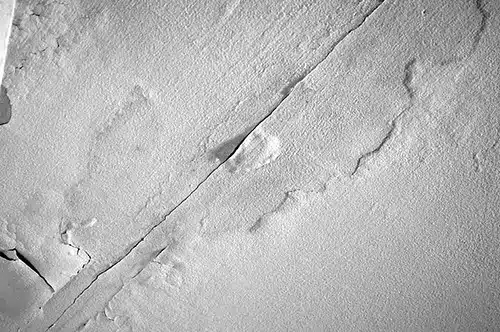

![How To Get Hair Out Of A Bathtub Drain 3 2/365 [Bathtub Drain]](https://green-life.blog/wp-content/uploads/2023/05/cOEu5edpkejq-150x150.jpg.webp)

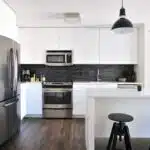

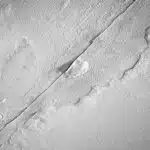
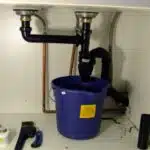



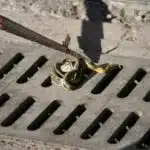


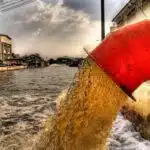
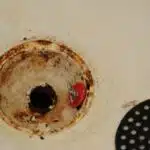

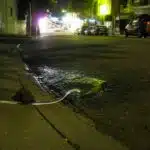
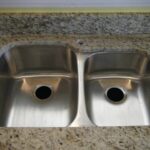



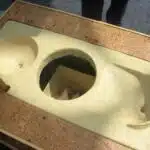
![How To Replace A Bathtub Drain In A Mobile Home 24 2/365 [Bathtub Drain]](https://green-life.blog/wp-content/uploads/2023/05/3ft8KAJsNnjq-150x150.jpg.webp)
